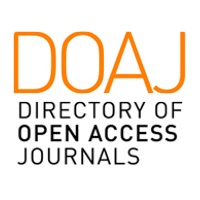Teacher retention, turnover and attrition during the COVID-19 pandemic
DOI:
https://doi.org/10.21703/rexe.v24i54.3038Keywords:
Retention, Teachers, pandemic, distance education, ChileAbstract
Educational systems face challenges in teacher retention, turnover, and attrition in the general teaching population, but particularly among teachers who are recently graduated. Hoping to contribute to the debate in the context of COVID-19, the research aimed to determine the magnitude and evolution of teacher retention, turnover, and attrition before and during the pandemic among teachers and new teachers in Chile. With a cohort design, the sample was primary and secondary school teachers between 2016-2024, excluding those who were legally retired. The results indicate an increase in post-pandemic retention and a decrease in turnover and attrition, especially in the first year of the educational crisis due to COVID-19. This effect persists for three educational cycles among the generation that entered teaching in 2020. The conclusions highlight the urgency of studying the topic comprehensively with mixed methodologies and longitudinal designs aimed at looking at the COVID-19 crisis as an opportunity to learn about the conditions that helped teacher retention in the general population and among novice teachers.
Downloads
References
Bacher-Hicks, A., Chi, O. y Orellana, A. (2023). Two years later: how COVID-19 has shaped the teacher workforce. Educational Research, 12(4), 219–29. https://doi.org/10.3102/0013189X231153659.
Bastian, K. y Fuller, S. (2023). Educator attrition and mobility during the COVID-19 pandemic. Educational Researcher, 52(8), 516–520. https://doi.org/10.3102/0013189X231187890
Bleiberg, J. y Kraft, M. (2023). What happened to the K-12 education labor market during COVID? The acute need for better data systems. Education Finance and Policy, 18(1), 156-172. https://doi.org/10.1162/edfp_a_00391
Borman, G. y Dowling, M. (2008). Teacher attrition and retention: a meta-analytic and narrative review of research. Review of Educational Research, 78(3), 367–409. http://dx.doi.org/10.3102/0034654308321455
Carrasco, D., Godoy, M. I. y Rivera, M. (2017). Rotación de profesores en Chile. Quiénes son y cuáles es el contexto de quienes dejan su primer trabajo. Midevidencias, 11, pp. 1-7.
Cervantes, E. (2021). Implicaciones de la pandemia por COVID-19 en la salud docente. Revisión sistemática. Revista Temas Sociológicos, 28, 113-142. http://dx.doi.org/10.29344/07196458.28.279
Devers, K., Duyar, I. y Buchanan, K. (2024). Examining teacher attrition through the experiences of former teachers before and during the COVID-19 pandemic. Education Sciences, 14(184). https://doi.org/ 10.3390/educsci14020184
Díaz, A., López, D., Salas, M. y Carrasco, D. (2021). Movilidad de profesores chilenos. Influencia de variables demográficas, características del establecimiento escolar y condiciones laborales. Perfiles Educativos, 43(172), 42-59. https://doi.org/10.22201/iisue.24486167e.2021.172.59514
Díaz, A. y Zamora, G. (2023). Un estudio sobre las motivaciones para dejar la profesión docente en Chile. Educação & Sociedade, 44, e259709. https://doi.org/10.1590/ES.259709
Educación 2020 (2021). 3° Encuesta online: #EstamosConectados. Educación 2020.
Educar Chile (2023). 3° Encuesta #VinculandoAprendizajes. Indagación sobre los principales desafíos y necesidades para realizar la labor docente de regreso a la presencialidad. Educar Chile.
Elige Educar (2018). ¿Son felices los profesores? Radiografía de la felicidad docente en Chile. Elige Educar.
Elige Educar (2021). Sueños y anhelos de las comunidades educativas para la educación en Chile. Elige Educar.
Elige Educar (2022a). Índice Elige Educar: reporte de resultados. Elige Educar.
Elige Educar (2022b). Retención, rotación, salidas de aula y reincorporación docente. Elige Educar.
Elige Educar, CEPPE, CIAE y Fundación Reimagina (2021). Situación de docentes y educadores en contexto de pandemia. Elige Educar, CEPPE, CIAE y Fundación Reimagina.
Gaete, A., Castro, M., Pino, F. y Mansilla, F. (2017). Abandono de la profesión docente en Chile: motivos para irse del aula y condiciones para volver. Estudios Pedagógicos, 43(1), 123-138. http://dx.doi.org/10.4067/S0718-07052017000100008
Goldhaber, D. y Theobald, R. (2022). Teacher attrition and mobility in the pandemic. Educational Evaluation and Policy Analysis, 20(10), 1-6. https://doi.org/10.3102/01623737221139285
Goldhaber, D. y Theobald, R. (2023). Teacher turnover three years into the pandemic era: evidence from Washington State. Center for Analysis of Longitudinal Data in Education Research.
Hernández-Sampieri, R. y Mendoza, C. (2018). Metodología de la investigación: las rutas cuantitativas, cualitativas y mixta. McGraw Hill.
Holme, J., Jabbar, H., Germain, E. y Dinning, J. (2017). Rethinking teacher turnover: longitudinal measures of instability in schools. Educational Researcher, 47(1). https://doi.or-g/10.3102/0013189X17735813
Ingersoll, R.y Tran, H. (2023). Teacher shortages and turnover in rural schools in the US: an organizational analysis. Educational Administration Quarterly, 59(2), 396-431. https://doi.org/10.1177/0013161X231159922
Kraft, M., Marinell, W. y Yee, D. (2016). School organizational contexts, teacher turnover, and student achievement: Evidence from panel data. American Educational Research Journal, 53(5), 1411–1499.
Lipscomb, S., Lai, L., Chaplin, D., Vigil, A. y Matthias, H. (2022). Staff attrition from Pennsylvania public schools during the COVID-19 pandemic. Pennsylvania Departament of Education.
Lizana, P. y Vega-Fernández, G. (2021). Teacher teleworking during the COVID-19 pandemic: Association between work, hours, work–family balance and quality of life. International Journal of Environmental Research and Public Health, 18(7566). https://doi. org/10.3390/ijerph18147566.
Ministerio de Educación [MINEDUC]. (2015). Aportes a la reflexión sobre movilidad y abandono docente 2013-2014. MINEDUC.
Ministerio de Educación [MINEDUC] (2020). Política educativa. Medidas para enfrentar el COVID-19: Estudiar en tiempos de Coronavirus. Revista de Educación, 389, 6-9.
Nguyen, T. (2020). Teacher attrition and retention in Kansas: A case study of geographically rural states with persistent teacher shortages. Online Journal of Rural Research & Policy, 15(1). https://doi.org/10.4148/1936-0487.1100
Orrego, V. (2022). Educación remota y salud mental docente en tiempos de COVID-19. REXE, Revista de Estudios y Experiencias en Educación, 21(45), 12-29. https://doi.org/10.21703/0718-5162.v21.n45.2022.001.
Orrego, V. (2023a). Innovación educativa y COVID-19: la crisis como desafío y oportunidad. Revista INTEREDU, Investigación, Sociedad y Educación, 8(1), 229-269. https://doi.org/10.32735/S2735-6523202300083067
Orrego, V (2023b). Rotación y deserción docente en Chile: ¿por qué es importante y cómo prevenirla y/o mitigarla?. REXE, Revista de Estudios y Experiencias en Educación, 22(50), 267–281. https://doi.org/10.21703/rexe.v22i50.1395
Orrego, V.. (2023c). Salud mental docente tras dos años de pandemia por COVID-19. REXE, Revista de Estudios y Experiencias en Educación, 22(49), 127-141. https://doi.org/10.21703/rexe.v22i49.1689
Pascual, J., Orrego, V., Cheyre, M. e Iturrieta, C. (2024). Navegando la adversidad y la oportunidad. Liderazgo escolar en tiempos de crisis. REICE. Revista Iberoamericana sobre Calidad, Eficacia y Cambio en Educación, 22(1), 87–102. https://doi.org/10.15366/reice2024.22.1.005
Podolsky, A., Kini, T., Darling-Hammond, L. y Bishop, J. (2019). Strategies for attracting and retaining educators: What does the evidence say?. Education Policy Analysis Archives, 27(38). http://dx.doi.org/10.14507/epaa.27.3722
Salas, G., Santander, P., Precht, A., Scholten, H. Moretti, R. y López, W. (2020). COVID-19: impacto psicosocial en la escuela en Chile. Desigualdades y desafíos para Latinoamérica. Avances en Psicología Latinoaméricana, 38(2), 1-17. https://doi.org/10.12804/revistas.urosario.edu.co/apl/a.9404
Struyven, K. y Vanthournout, G. (2014) Teachers’ exit decisions: an investigation into the reasons why newly qualified teachers fail to enter the teaching profession or why those who do enter do not continue teaching. Teaching and Teacher Education, 43, 37–45. https://doi.org/10.1016/j.tate.2014.06.002
Tompkins, A. (2023). Breaking the cycle of teacher attrition: suggested policies and practice for retention. Journal of School Administration Research and Development, 8(1), 24-35. https://doi.org/10.32674/jsard.v8i1.3960
Valenzuela, J. P. y Sevilla, A. (2013). La movilidad de los nuevos profesores chilenos en la década del 2000: un sistema escolar viviendo en peligro. Proyecto N° 1120740. Fondo Nacional de la Ciencia y Tecnología [FONDECYT], Ministerio de Educación [MINEDUC].
Downloads
Published
Issue
Section
License
Copyright (c) 2025 Vanessa Orrego Tapia

This work is licensed under a Creative Commons Attribution 4.0 International License.
Open Access Policy
This journal provides immediate open access to its content, based on the principle that offering the public free access to research fosters greater global knowledge exchange.
License
The REXE Journal, “Journal of Studies and Experiences in Education,” published by the Faculty of Education at the Universidad Católica de la Santísima Concepción, is distributed under a License. Creative Commons Atribución 4.0 Internacional.






